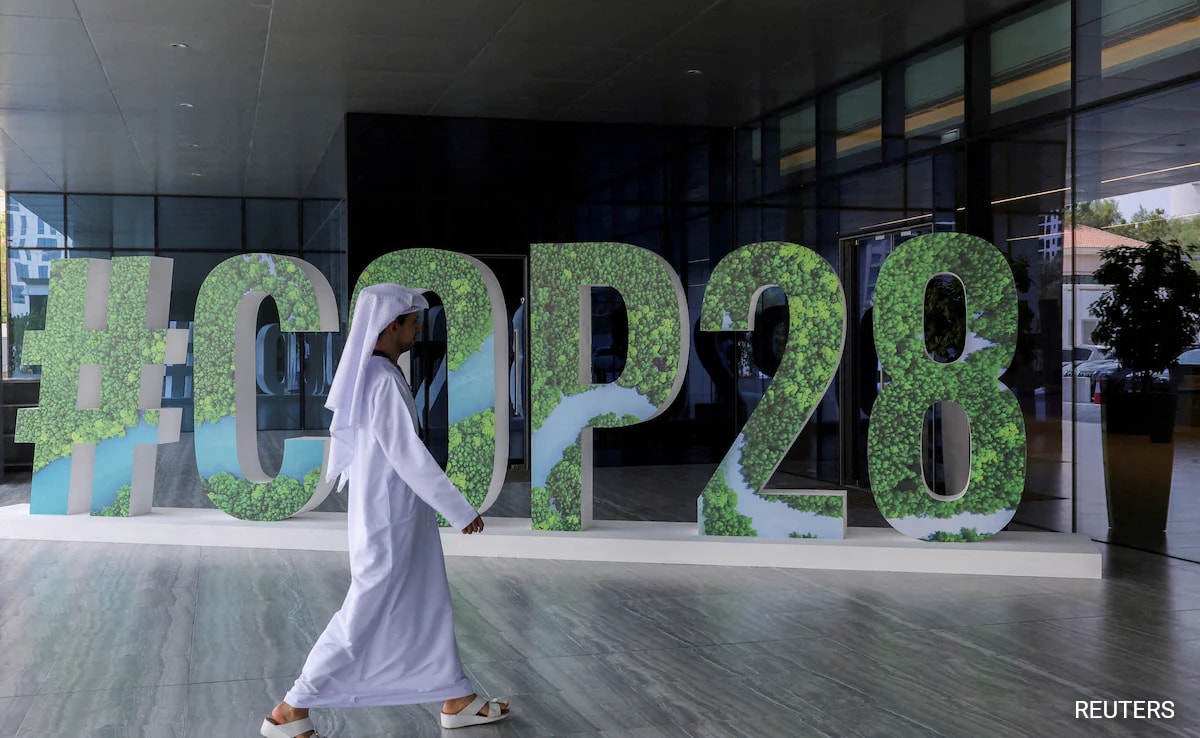
COP makes decisions through negotiation leading up to consensus.
New Delhi:
Will COP28 be able to operationalize the Loss and Damage Fund? The onus is on the rich nations to put their money where their mouth is in the fight against climate change because it is already too late.
All eyes are on COP 28 for progress made by the global community on the Loss and Damage Fund that was announced in Sharm el-Sheikh last year. The United Nations Framework Convention on Climate Change (UNFCCC’s) Transnational Committee report in September noted “significant progress” in trying to operationalize the funding arrangements but whether it translates into any major announcements is to be seen.
The UNFCCC website says the president-designate of COP28 and UAE’s Special Envoy for Climate Change, Sultan Ahmed Al Jaber, called on countries to be creative in identifying funding sources and defining the financing arrangements to ensure that funds are adequate and distributed efficiently. So, while a long-standing demand of a Loss and Damage Fund was fulfilled in November 2022 in Egypt for climate mitigation, the establishment of a mechanism for the distribution of the funds and contributions to the fund remains a vexed issue.
What is COP?
The Conference of Parties (COP) is the top decision-making and stock-taking body to tackle climate change under the United Nations Framework Convention on Climate Change (UNFCCC).
The 197 countries that are part of COP are broadly divided into two groups – Annexe I parties and Non-Annexe I parties. Annexe I includes industrialized or developed nations that are historically responsible for the greenhouse gas emissions that are contributing to global warming. Within Annexe I parties are Annex II countries that have a greater obligation to provide the financial resources needed to mitigate the impact of climate change.
The Non-Annexe Parties include all other developing countries, also referred to as the Global South. These nations are more vulnerable to the impacts of climate change and require financial assistance and reparation from richer nations for the damage already done due to historical emissions.
What is the Loss and Damage Fund?
The Loss and Damage Fund is a sort of reparation package where rich nations are to pay a damage cost to developing nations, which are more vulnerable to climate change. The countries, part of the Conference of Parties (COP), agreed on establishing the fund after an arduous journey of around three decades.
How did the idea of the Loss and Damage Fund come about?
The Paris Agreement in 2015 at COP21 prepared the base for what was to be called the Loss and Damage Fund. It was for the first time in COP21 that rich countries finally accepted that there was a need to recognize loss and damage from extreme weather events but this did not lead to a concrete compensation separate from climate financing, which too were they were falling woefully short in providing the vulnerable nations. The Loss and Damage Fund would be set up about seven years later in Egypt at COP27. What COP15 said – “The Paris Agreement reaffirms that developed countries should take the lead in providing financial assistance to countries that are less endowed and more vulnerable, while for the first time also encouraging voluntary contributions by other Parties. Climate finance is needed for mitigation because large-scale investments are required to significantly reduce emissions.”
Countries that rallied for Loss and Damage Fund:
India was a moderately powerful voice rallying the Global South for a Loss and Damage Fund. Others like the Alliance of the Small Island States (AOSIS), an intergovernmental organisation that carries out advocacy related to environmental policies, were also moderately powerful in pushing the idea forward.
Where was the hurdle?
One of the most powerful countries in the United Nations, the US, has had the most far-reaching impact on UNFCCC decisions, especially those related to financial payout commitments to developing countries. The conversation around the Loss and Damage Fund dropped drastically during the tenure of President Donald Trump, who was termed a climate change denier. As 2020 saw him facing off against Joe Biden who made significant climate promises, the Loss and Damage Fund started resurfacing on the UNFCCC agenda. A piece in the journal Nature in October 2020 by Maxmen et al said Biden was “campaigning on the most aggressive climate platform ever advanced by a US presidential nominee in the general election”.
What else spurred the Loss and Damage Fund?
The run-up to COP27 in Egypt saw some massive disasters attributed to climate change – from the flash floods in Pakistan last year, the floods and landslides in India in Uttarakhand in 2021 to the wildfires that burned thirteen million acres in Australia and two million acres in California, US. There was also concern that not only were these disasters threatening life but also livelihood and food security. The floods in China in 2020 led researchers to suggest that climate extremes could severely reduce crop production.
Why are decisions in COP difficult?
COP makes decisions through negotiation leading up to consensus. Usually, it amounts to no one objecting to a decision. There is no mechanism to act against non-compliant members. Member states can use naming and peer review as a means to compel action. Till such time as consensus is reached and announced it is hard to say which way the negotiations will go. What is plain is that it’s already too late in the fight against climate change and for the sake of humanity, the richer nations need to put their money where their mouth is.




